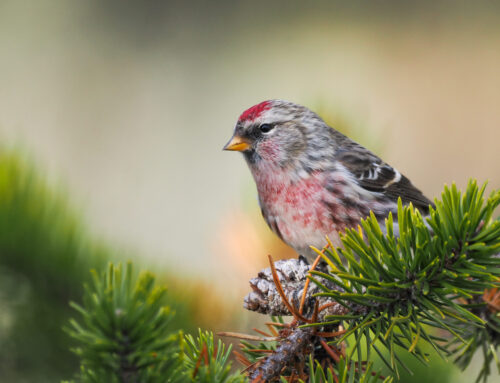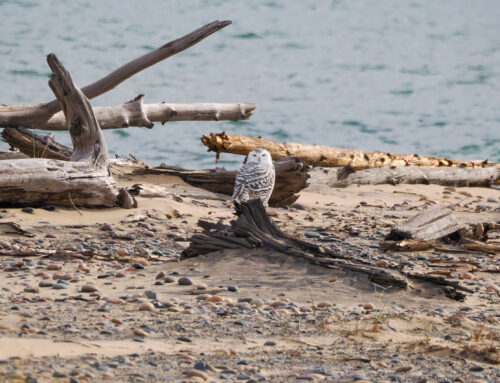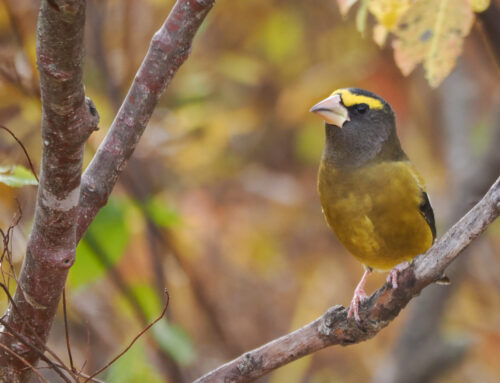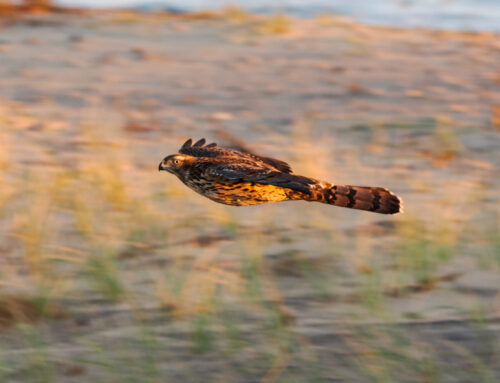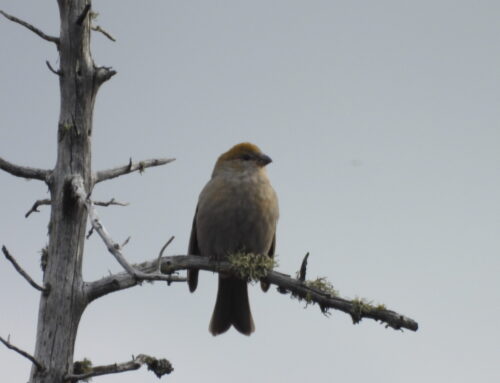Exciting news! This week new life has entered this world in the form of three downy fluffballs — yes, I am talking about our resident Piping Plovers! Just a few days ago, our first Piping Plover hatch of the summer happened successfully under the careful watch of our Piping Plover Intern Alec Olivier and an accompanying volunteer. Despite it being Alec’s day off, when he heard the news that the plovers were hatching, he made his way to the nest immediately. It was great to watch each tiny newborn slowly creep out from underneath the adult and catch its first glimpse of the world.
For the last several days, I have made a point to make routine visits to the beach to track the progress of the chicks. I must say I admire their determination, as learning to walk clearly has not been a smooth or straightforward process. Watching them begin to leave the nest has recontextualized my surroundings in a way I never thought possible, with each stone, pebble, and piece of driftwood posing a challenge that I imagine to be on par with climbing Half Dome or summiting Everest. With all the elegance of a cotton ball on stilts, these tenacious newborns have slowly but surely begun to learn how to put one foot before the other, even on the pointiest of pebbles.
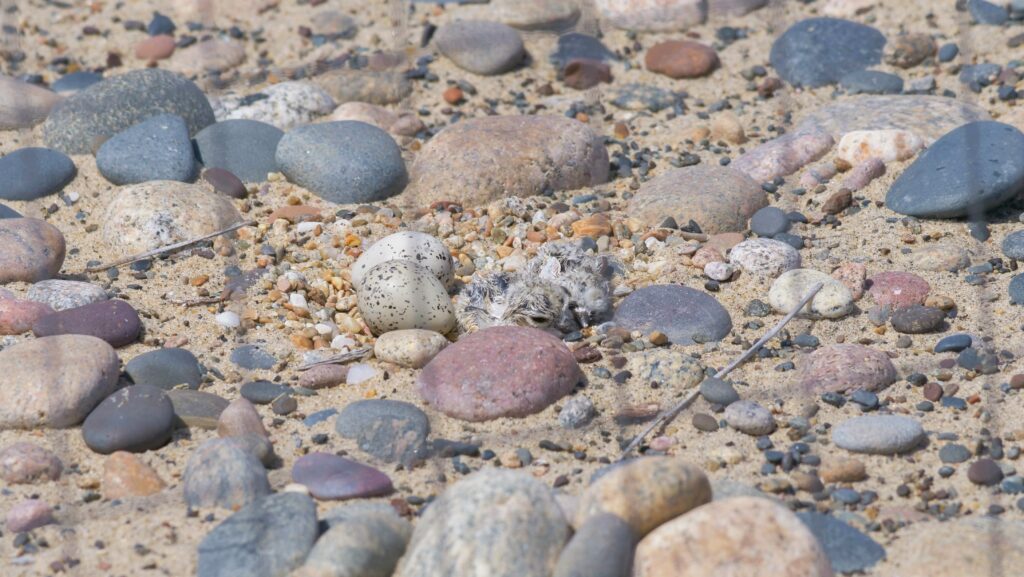
Two Piping Plover chicks shortly after hatching. They are tucked away safely inside the nest where an exclosure helps keep them safe. Photo by Blake Carlile
Yet as tough and determined as they are, Piping Plover chicks are still quite fragile. Now that they have finally hatched, I encourage all visitors of Whitefish Point to be extra careful around the nesting area. This week, the beach will likely be filled with visitors during Independence Day, possibly creating a source of unnecessary stress for the chicks and their parents. While Alec, myself, and others will be working hard to make sure these endangered birds are safe and well cared for, it is important to read and follow the rules if you are visiting. Remember to keep your distance from the nesting area and keep all dogs on leash. You can also help by learning to identify Piping Plovers yourself.
Beyond this week’s exciting news, life at the Point remains ever-changing. Just as I said they would when they arrived, the Cedar Waxwings here have warmed up to me quite a bit, allowing for better photos and more face-to-face interaction. I’ve also been able to catch great views of some of my other favorites, like the impressive Bald Eagle and Ruddy Turnstone.
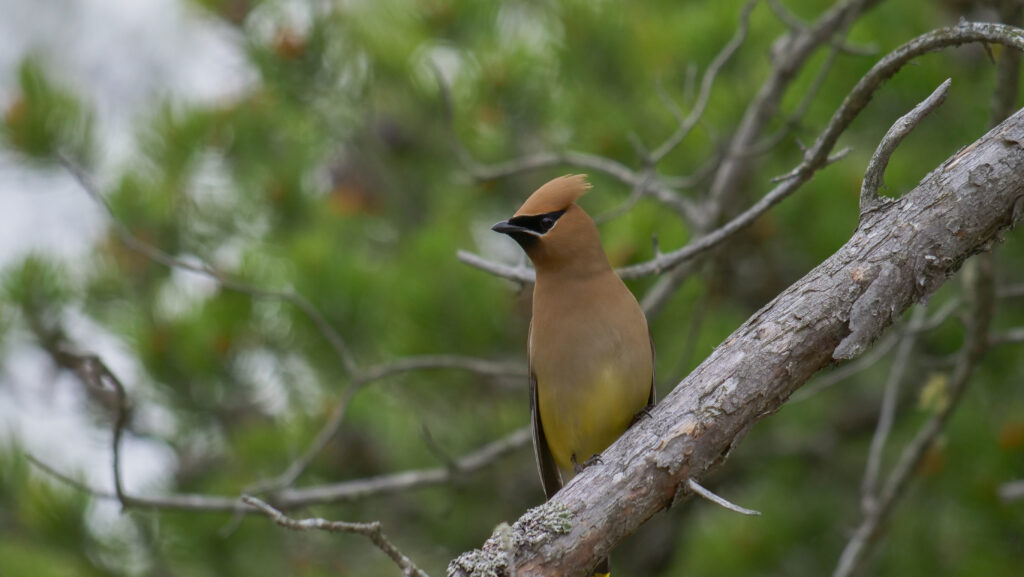
A Cedar Waxwing rests on a branch. Photo by Blake Carlile.
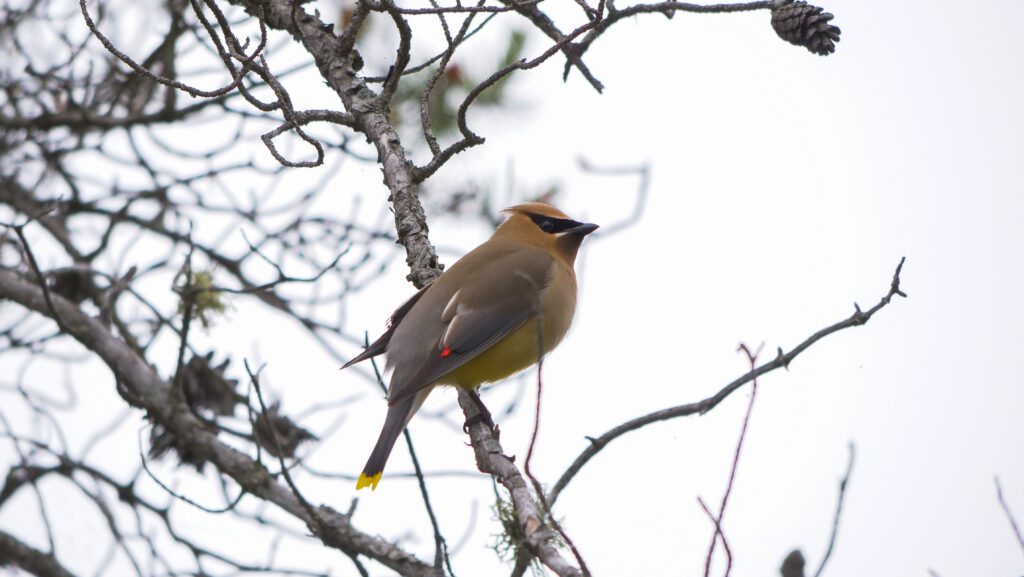
A Cedar Waxwing displaying its colorful feathers. Photo by Blake Carlile.

An immature Bald Eagle soaring above the beach. Photo by Blake Carlile
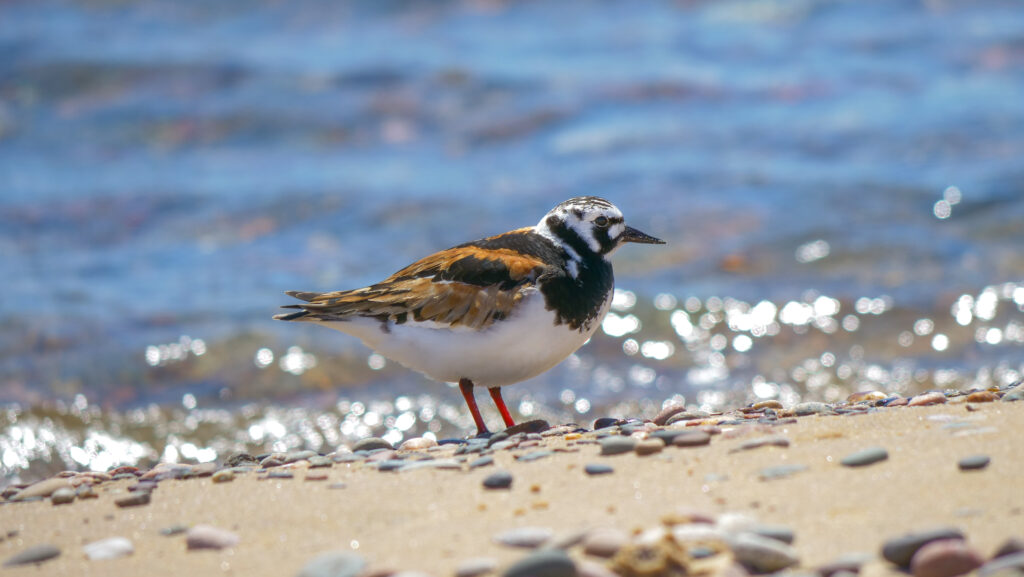
A Ruddy Turnstone walks the shore of Lake Superior. Photo by Blake Carlile
If you’re at the Point this weekend, please stop by the Owl’s Roost and say hello during my office hours from 3 p.m. to 5 p.m., Friday through Sunday!
Thank you for reading,
Blake Carlile
2021 Summer Outreach Intern
Featured Photo: A Piping Plover runs across the sand. Photo by Blake Carlile.
You can read Blake’s weekly blog posts and follow WPBO’s social media (Facebook, Instagram, and Twitter) for more highlights of his experiences this season.
If you want to chat with Blake in person, he holds office hours at the Owl’s Roost every Friday through Sunday from 3 – 5 p.m.


